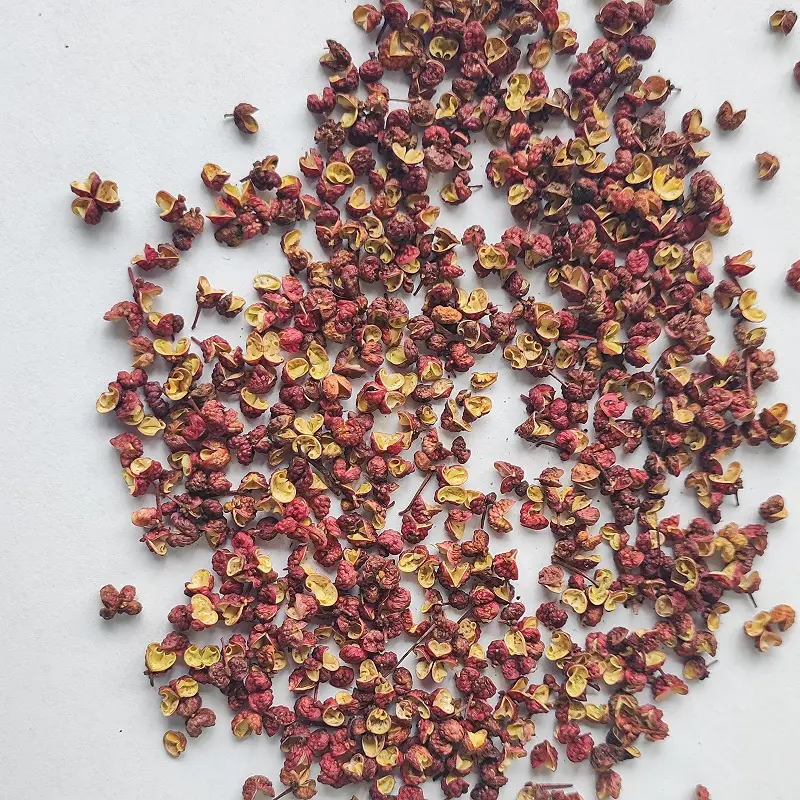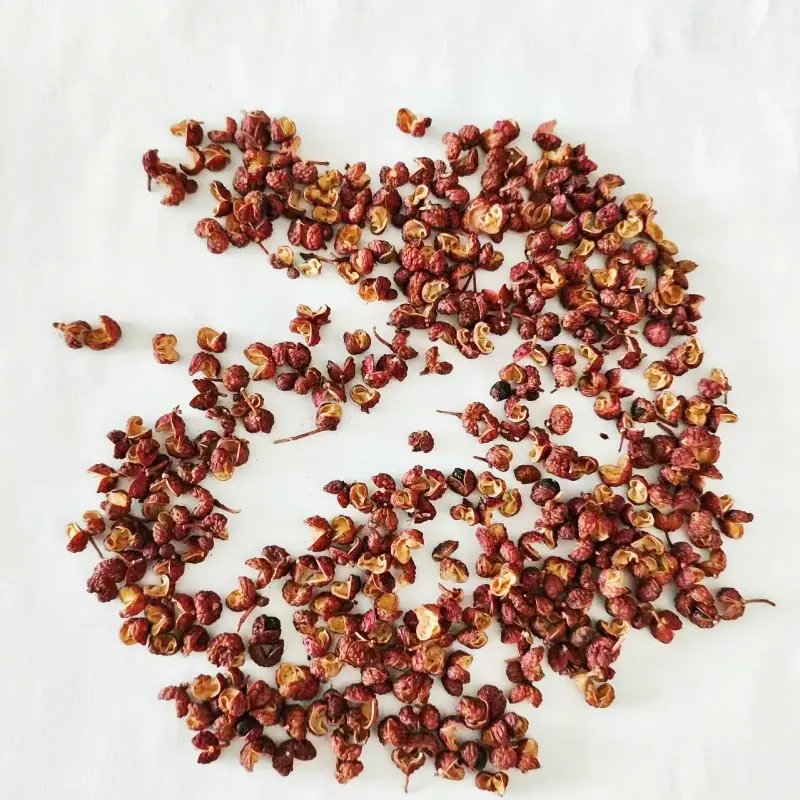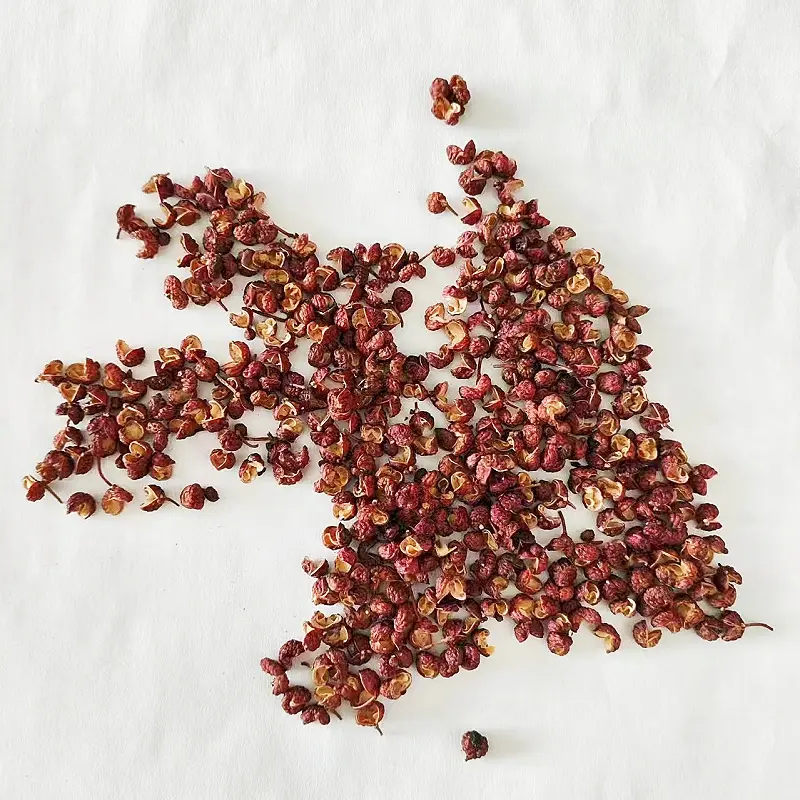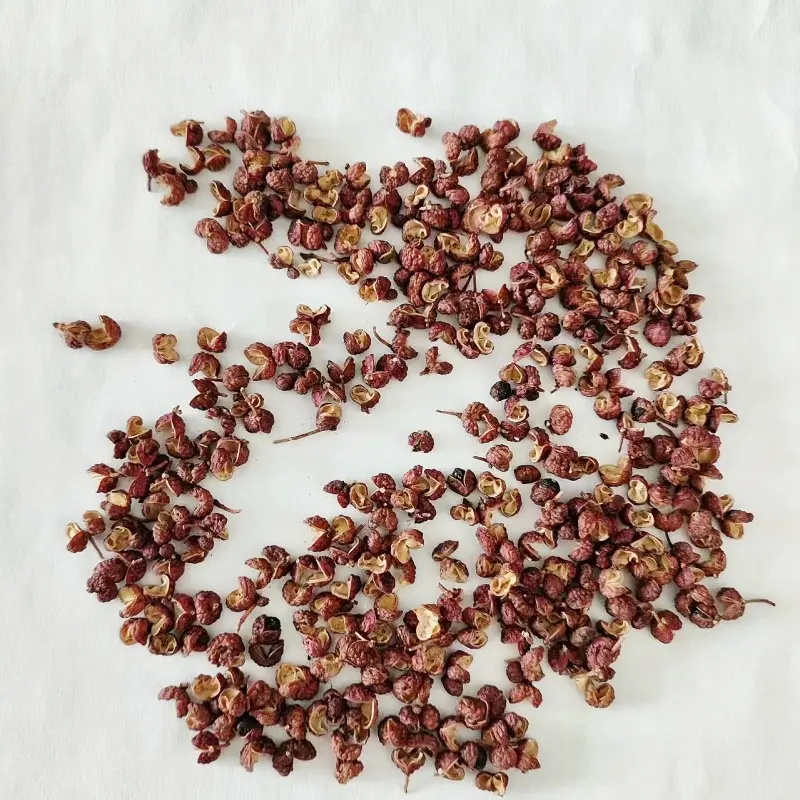Green Peppercorns vs Capers: A Culinary Comparison
Green peppercorns and capers are two unique ingredients that add distinctive flavors to various dishes across different cuisines. Though they might seem similar in their use as seasoning agents, they are quite different in terms of origin, flavor profile, culinary application, and nutritional benefits. This article delves into these differences, exploring the unique characteristics and uses of green peppercorns and capers.
Origin and Cultivation
Green Peppercorns
Green peppercorns are the unripe berries of the Piper nigrum plant, the same plant that produces black, white, and red peppercorns. The difference in color and flavor among these peppercorns comes from the stage of ripeness at which they are harvested and the processing method used. Green peppercorns are picked when they are still young and unripe. To preserve their vibrant green color and fresh flavor, they are often freeze-dried or packed in brine or vinegar.
Native to South India, the Piper nigrum plant thrives in tropical climates. Today, it is cultivated in various countries, including India, Vietnam, and Brazil. The green peppercorns' mild, fresh taste makes them a popular choice in culinary traditions worldwide, especially in French and Thai cuisines.
Capers
Capers are the immature flower buds of the Capparis spinosa plant, also known as the caper bush. This plant is native to the Mediterranean region but is also grown in parts of Asia and Africa. The caper bush is a hardy plant that thrives in arid, rocky environments, often found growing wild in these regions.
After harvesting, capers are typically pickled in brine or vinegar, which enhances their sharp, tangy flavor. This preservation method not only extends their shelf life but also imparts the distinctive taste that capers are known for. The size of capers can vary, with smaller ones generally being more prized for their delicate texture and intense flavor.
Flavor Profile
Green Peppercorns
Green peppercorns have a milder and fresher taste compared to their black counterparts. They offer a subtle heat with a slightly fruity and herbaceous flavor. This makes them versatile in dishes where a gentle peppery kick is desired without overpowering the other ingredients. The fresh and vibrant nature of green peppercorns allows them to complement a wide range of flavors, from creamy sauces to light seafood dishes.
Capers
Capers are known for their sharp, tangy, and slightly lemony flavor. This distinctive taste comes from the capers being pickled, which introduces a salty and briny element to their profile. The tanginess of capers can brighten up rich and savory dishes, adding a burst of flavor that cuts through the heaviness. Their unique flavor makes them a popular addition to Mediterranean dishes, where they are often paired with ingredients like olives, tomatoes, and anchovies.
Culinary Uses
Green Peppercorns
Green peppercorns are used in a variety of dishes, adding a mild spiciness and a fresh aroma. In French cuisine, they are often used in sauces such as "sauce au poivre vert," which is typically served with steak. The peppercorns' gentle heat complements the richness of the creamy sauce, creating a balanced flavor profile.
In Thai cuisine, green peppercorns are used in both fresh and dried forms. They are often incorporated into stir-fries, curries, and soups, where their mild heat and fresh flavor enhance the overall dish. For example, "pad prik king," a stir-fried dish with green beans and meat, often includes fresh green peppercorns to add a burst of flavor.
Capers
Capers are a staple in Mediterranean cuisine and are used to add a tangy and briny flavor to a variety of dishes. One of the most famous uses of capers is in "chicken piccata," where they are combined with lemon juice, butter, and white wine to create a flavorful sauce for the chicken. The capers' tanginess pairs perfectly with the citrusy lemon and the richness of the butter.
In Italian cuisine, capers are a key ingredient in dishes like "spaghetti alla puttanesca," a pasta dish that includes tomatoes, olives, garlic, and anchovies. The capers add a sharp and salty element that balances the sweetness of the tomatoes and the richness of the olives and anchovies.
Capers are also used in salads, dressings, and as a garnish for various dishes. Their ability to add a burst of flavor makes them a versatile ingredient in many culinary applications.
Nutritional Benefits
Green Peppercorns
Green peppercorns are not only flavorful but also offer several nutritional benefits. They are a good source of vitamins and minerals, including vitamin C, vitamin K, and iron. Additionally, they contain antioxidants, which help to protect the body from free radicals and reduce inflammation.
The piperine in green peppercorns has been shown to enhance the absorption of certain nutrients, such as curcumin from turmeric, making them a beneficial addition to the diet. Piperine also has potential anti-inflammatory and antibacterial properties, contributing to overall health and wellness.
Capers
Capers are low in calories but packed with nutrients. They are a good source of vitamins A, K, and E, as well as minerals like iron, calcium, and magnesium. The pickling process also means that capers contain a significant amount of sodium, which should be considered for those monitoring their salt intake.
Capers are rich in antioxidants, particularly flavonoids like quercetin and rutin, which have anti-inflammatory and antihistamine properties. These compounds help to protect the body from oxidative stress and support the immune system. Additionally, capers contain dietary fiber, which aids in digestion and helps to maintain a healthy gut.
What Are The Primary Culinary Uses Of Green Peppercorns, And How Do They Enhance Dishes?
Green peppercorns, harvested from the Piper nigrum plant while still unripe, are valued for their mild heat and fresh, fruity flavor. They are a versatile ingredient in various cuisines, particularly French and Thai, where they enhance dishes without overpowering other flavors. Here’s an in-depth look at how green peppercorns can be used to elevate your culinary creations:
French Cuisine
In French cuisine, green peppercorns are often featured in classic dishes, adding a subtle heat and complexity. One of the most well-known applications is in "sauce au poivre vert" (green peppercorn sauce). This creamy, rich sauce is typically served with steak, chicken, or pork. The peppercorns' mild spiciness complements the dish's richness, creating a balanced flavor profile. To prepare this sauce, green peppercorns are usually sautéed with shallots and deglazed with cognac or brandy. Cream or demi-glace is then added, resulting in a luxurious sauce that enhances the meat's flavors.
Thai Cuisine
In Thai cuisine, green peppercorns are used in both fresh and dried forms. They are a key ingredient in various curries, stir-fries, and soups, where their mild heat and fresh flavor enhance the overall dish. For instance, in "pad prik king," a popular stir-fried dish with green beans and meat, fresh green peppercorns are added to provide a burst of flavor. The peppercorns' fresh and vibrant nature works well with the aromatic herbs and spices used in Thai cooking, such as lemongrass, kaffir lime leaves, and galangal.
Versatility in Cooking
Green peppercorns are incredibly versatile and can be used in a variety of other culinary applications. They can be added to marinades, dressings, and sauces to provide a gentle kick. When crushed or ground, they can be sprinkled over salads, vegetables, and even desserts, adding a unique layer of flavor. For example, a green peppercorn and honey glaze can be used to coat roasted vegetables, enhancing their natural sweetness while adding a mild spiciness.
Preservation Methods
Green peppercorns are often preserved in brine or vinegar, which not only extends their shelf life but also introduces an additional tangy flavor. These preserved green peppercorns can be used similarly to capers, adding a piquant note to dishes. For instance, they can be incorporated into a vinaigrette or a creamy potato salad, where their mild heat and slight acidity complement the other ingredients.
Pairing with Ingredients
Green peppercorns pair well with a wide range of ingredients. They work beautifully with creamy and rich elements, such as cheeses, creams, and butter. This makes them a great addition to cheese boards, where their spiciness can contrast with the creamy texture of cheeses like brie or camembert. They also pair well with seafood, providing a subtle heat that enhances the delicate flavors of fish and shellfish. For example, green peppercorns can be used in a beurre blanc sauce served with grilled fish or seafood pasta.
Health Benefits
Aside from their culinary uses, green peppercorns offer health benefits as well. They are rich in antioxidants, vitamins, and minerals, including vitamin C, vitamin K, and iron. The piperine in green peppercorns has been shown to enhance the absorption of certain nutrients, such as curcumin from turmeric, making them a beneficial addition to the diet. Piperine also has potential anti-inflammatory and antibacterial properties, contributing to overall health and wellness.
In conclusion, green peppercorns are a versatile ingredient that can enhance a variety of dishes with their mild heat and fresh, fruity flavor. Whether used in classic French sauces, Thai curries, or as a unique seasoning in salads and marinades, they bring a distinctive touch to any culinary creation. Their ability to complement rich and creamy elements, as well as their health benefits, make them a valuable addition to any kitchen.
What Are Capers, And How Are They Used In Cooking To Enhance Flavors?
Capers are the immature flower buds of the Capparis spinosa plant, commonly known as the caper bush. Native to the Mediterranean region, the caper bush thrives in arid, rocky environments, often growing wild in these areas. After harvesting, capers are typically pickled in brine or vinegar, which not only preserves them but also enhances their distinctive sharp, tangy, and slightly lemony flavor. This unique taste makes capers a valuable ingredient in various culinary traditions, particularly in Mediterranean cuisine.
Characteristics and Flavor Profile
Capers are small, typically ranging from the size of a peppercorn to that of a pea. Their pickling process imparts a tangy, salty, and slightly astringent flavor, which can brighten up a variety of dishes. The smaller capers, known as nonpareils, are highly prized for their delicate texture and intense flavor. Larger capers, while still flavorful, have a slightly more robust taste and are often used in heartier dishes.
Culinary Uses in Mediterranean Cuisine
Capers are a staple in Mediterranean cooking and are used to add a burst of tangy flavor to numerous dishes. One classic dish featuring capers is "chicken piccata," an Italian-American favorite. In this dish, capers are combined with lemon juice, white wine, and butter to create a bright and flavorful sauce that perfectly complements the tender, sautéed chicken. The capers' tanginess and slight brininess balance the richness of the butter and the acidity of the lemon, creating a harmonious blend of flavors.
Another popular Mediterranean dish that utilizes capers is "spaghetti alla puttanesca." This Italian pasta dish includes tomatoes, olives, garlic, anchovies, and capers. The capers add a sharp, salty note that enhances the overall flavor profile, balancing the sweetness of the tomatoes and the richness of the olives and anchovies. Capers are also commonly used in tapenades, spreads made from finely chopped olives, capers, and anchovies, which are often served with crusty bread as an appetizer.
Versatility in Cooking
Capers' versatility extends beyond Mediterranean cuisine. They can be used in a variety of dishes to add a tangy and flavorful punch. For example, capers can be incorporated into salad dressings, providing a salty and briny component that enhances the flavors of the other ingredients. A classic Caesar salad dressing often includes capers, blending them with garlic, anchovies, lemon juice, and Parmesan cheese to create a rich and tangy dressing.
Capers are also used as a garnish for dishes like smoked salmon, where their sharp flavor contrasts with the rich, oily fish. They can be sprinkled over roasted vegetables, added to potato salads, or mixed into sauces and dips. The briny, tangy taste of capers can elevate simple dishes, adding complexity and depth of flavor.
Nutritional Benefits
Capers are not only flavorful but also nutritious. They are low in calories and contain a variety of vitamins and minerals, including vitamins A, K, and E, as well as iron, calcium, and magnesium. Capers are particularly rich in antioxidants, such as flavonoids like quercetin and rutin, which have anti-inflammatory and antihistamine properties. These compounds help to protect the body from oxidative stress and support the immune system.
The pickling process means that capers contain a significant amount of sodium, which is an important consideration for those monitoring their salt intake. However, their strong flavor means that only a small amount is needed to impart their distinctive taste to dishes, making them a healthy addition to the diet when used in moderation.
Tips for Cooking with Capers
When using capers in cooking, it is important to rinse them before adding them to dishes, especially if they have been preserved in a particularly salty brine. This helps to remove excess salt and ensures that their tangy flavor is not overpowering. Capers can be chopped or left whole, depending on the desired texture and intensity of flavor in the dish.
In summary, capers are a versatile and flavorful ingredient that can enhance a wide range of dishes. Their sharp, tangy taste adds brightness and complexity, making them a staple in Mediterranean cuisine and beyond. Whether used in classic dishes like chicken piccata and spaghetti alla puttanesca or as a garnish for salads and smoked salmon, capers bring a distinctive and delightful flavor to any culinary creation.
How Do Green Peppercorns And Capers Compare Nutritionally, And What Health Benefits Do They Offer?
Green peppercorns and capers, though different in flavor and culinary use, both offer a variety of nutritional benefits that contribute to overall health. Understanding their nutritional profiles and health advantages can help you make informed choices about incorporating these ingredients into your diet.
Nutritional Profile of Green Peppercorns
Green peppercorns are the unripe berries of the Piper nigrum plant. They are typically harvested before maturity and can be consumed fresh, dried, or preserved in brine or vinegar. Here are some key nutritional aspects of green peppercorns:
Vitamins and Minerals: Green peppercorns are a good source of vitamins such as vitamin C and vitamin K. Vitamin C is an antioxidant that supports the immune system, aids in collagen production, and enhances iron absorption. Vitamin K is essential for blood clotting and bone health. Additionally, green peppercorns contain minerals like iron, which is crucial for oxygen transport in the blood.
Antioxidants: Green peppercorns contain various antioxidants, including piperine, which helps to protect cells from oxidative damage caused by free radicals. Antioxidants play a role in reducing inflammation and may help lower the risk of chronic diseases.
Piperine: Piperine, the compound responsible for the spicy flavor of peppercorns, has several health benefits. It has been shown to enhance the absorption of certain nutrients, such as curcumin from turmeric, and may have anti-inflammatory and antibacterial properties. Piperine also supports digestion by stimulating the secretion of digestive enzymes.
Nutritional Profile of Capers
Capers, the pickled flower buds of the Capparis spinosa plant, are also rich in nutrients. Their pickling process, while adding sodium, preserves many of their beneficial compounds. Here are the nutritional highlights of capers:
Vitamins and Minerals: Capers are low in calories but rich in vitamins A, K, and E. Vitamin A supports vision and immune function, vitamin K is important for blood clotting and bone health, and vitamin E acts as an antioxidant. Capers also provide minerals like calcium, which is essential for bone health, and magnesium, which is involved in over 300 biochemical reactions in the body.
Antioxidants: Capers are particularly high in flavonoids, such as quercetin and rutin, which have potent antioxidant properties. These compounds help to neutralize free radicals, reduce inflammation, and protect against chronic diseases.
Fiber: Capers contain dietary fiber, which is beneficial for digestive health. Fiber helps to maintain regular bowel movements, prevent constipation, and support a healthy gut microbiome.
Sodium Content: One consideration when consuming capers is their high sodium content due to the pickling process. While sodium is necessary for maintaining fluid balance and nerve function, excessive intake can lead to high blood pressure and other health issues. It is important to use capers in moderation and rinse them before use to reduce their saltiness.
Health Benefits Comparison
Both green peppercorns and capers offer unique health benefits, contributing to a well-rounded diet:
Antioxidant Protection: Both ingredients are rich in antioxidants, which help to protect the body from oxidative stress and reduce inflammation. This can lower the risk of chronic diseases such as heart disease, cancer, and neurodegenerative disorders.
Digestive Health: Green peppercorns support digestion by stimulating the secretion of digestive enzymes, while capers provide dietary fiber, promoting regular bowel movements and gut health.
Bone Health: The vitamin K content in both green peppercorns and capers supports bone health by aiding in the regulation of calcium and promoting bone mineralization.
Immune Support: Vitamin C in green peppercorns and vitamin A in capers both contribute to a healthy immune system, helping the body to fend off infections and illnesses.
Enhanced Nutrient Absorption: Piperine in green peppercorns enhances the bioavailability of certain nutrients, such as curcumin, making it easier for the body to absorb and utilize these beneficial compounds.
Practical Tips for Incorporation
To maximize the health benefits of green peppercorns and capers, consider the following tips:
Use in Moderation: Due to their strong flavors, a little goes a long way. Incorporate small amounts into dishes to enhance flavor without overwhelming other ingredients.
Rinse Capers: Rinse capers before use to reduce their sodium content, especially if you are monitoring your salt intake.
Combine with Other Nutrient-Dense Foods: Pair green peppercorns and capers with other healthy ingredients like vegetables, lean proteins, and whole grains to create balanced and nutritious meals.
Experiment with Recipes: Try using green peppercorns in creamy sauces, stir-fries, and marinades, and capers in salads, pasta dishes, and as garnishes to explore their full culinary potential.
In conclusion, both green peppercorns and capers are nutritious ingredients that offer a range of health benefits. Their distinct flavors and nutritional profiles make them valuable additions to a healthy diet, contributing to antioxidant protection, digestive health, bone health, and immune support. By incorporating these ingredients into your meals, you can enhance both the flavor and nutritional value of your dishes.
How Do Green Peppercorns Differ From Black, White, And Red Peppercorns In Terms Of Flavor And Usage?
Green, black, white, and red peppercorns all come from the same plant, Piper nigrum, but their differences in flavor, color, and culinary usage stem from the stage at which they are harvested and how they are processed.
Green Peppercorns
Flavor: Green peppercorns are harvested while still unripe, retaining a fresh, mild heat with a slightly fruity and herbaceous flavor. Unlike black peppercorns, their spiciness is more subdued, making them suitable for dishes that require a gentler peppery kick.
Usage: Green peppercorns are versatile and can be used in various forms, including fresh, dried, or preserved in brine or vinegar. They are popular in French cuisine, especially in creamy sauces such as "sauce au poivre vert," typically served with steak, poultry, or pork. In Thai cuisine, they are used in curries, stir-fries, and soups, where their fresh flavor complements aromatic herbs and spices. Their mildness allows them to be used in marinades, dressings, and even as a seasoning for desserts.
Black Peppercorns
Flavor: Black peppercorns are the most common type and are harvested when the berries begin to turn red and then dried. This process gives them a strong, pungent, and spicy flavor with a hint of citrus. The outer layer shrinks and darkens, contributing to their characteristic wrinkled appearance.
Usage: Black peppercorns are ubiquitous in global cuisine and can be used whole, cracked, or ground. They are a staple seasoning in savory dishes, soups, stews, and marinades. Their robust flavor makes them ideal for adding a strong, spicy kick to meats, vegetables, and even some desserts like chocolate.
White Peppercorns
Flavor: White peppercorns are fully ripe berries that have had their outer shell removed before drying, leaving the inner seed. They have a milder, earthier flavor compared to black peppercorns and lack the outer layer's pungency.
Usage: White peppercorns are often used in light-colored dishes where black specks would be visually unappealing, such as in white sauces, cream soups, and mashed potatoes. They are also prevalent in Chinese cuisine, where their subtle flavor complements delicate dishes like fish and tofu without overpowering them.
Red Peppercorns
Flavor: Red peppercorns are fully ripe berries that are either dried or preserved in brine. When dried, they are rare and have a sweet, fruity, and slightly spicy flavor. When brined, they retain their vibrant color and develop a tangy taste.
Usage: Dried red peppercorns are less common and can be used similarly to black peppercorns but with a milder, fruitier note. Brined red peppercorns are used as a garnish or added to dishes where their bright color and unique flavor can shine, such as in salads, sauces, and seafood dishes.
Summary of Differences
Harvesting and Processing: Green peppercorns are unripe and often preserved; black peppercorns are semi-ripe and dried; white peppercorns are fully ripe with the outer shell removed; red peppercorns are fully ripe and either dried or preserved.
Flavor Profiles: Green peppercorns are mild and fruity; black peppercorns are strong and pungent; white peppercorns are earthy and subtle; red peppercorns are sweet and fruity when dried, tangy when brined.
Culinary Uses: Green peppercorns are ideal for creamy sauces and fresh dishes; black peppercorns are versatile for robust seasoning; white peppercorns are perfect for light-colored dishes; red peppercorns add visual appeal and a unique flavor.
In conclusion, each type of peppercorn offers distinct flavors and uses, allowing chefs and home cooks to select the appropriate variety to enhance their culinary creations. Understanding these differences helps in making informed choices about which peppercorn to use based on the desired flavor and presentation of a dish.
What Are Some Traditional Dishes That Feature Capers, And How Do They Contribute To These Recipes?
Capers, with their sharp, tangy flavor, are a staple in many traditional dishes across various cuisines. Their unique taste and texture can enhance the overall flavor profile of a dish, adding complexity and a burst of brightness. Here are some traditional dishes that prominently feature capers and an exploration of how they contribute to these recipes:
Chicken Piccata
Description: Chicken piccata is a classic Italian-American dish that showcases capers prominently. Thinly sliced chicken breasts are dredged in flour, sautéed, and then simmered in a sauce made from lemon juice, white wine, butter, and capers.
Contribution: The capers in chicken piccata add a briny, tangy note that balances the richness of the butter and the acidity of the lemon juice. Their slight saltiness and unique flavor provide depth and complexity to the sauce, making the dish more vibrant and well-rounded.
Spaghetti alla Puttanesca
Description: Spaghetti alla puttanesca is a bold and flavorful Italian pasta dish made with tomatoes, olives, anchovies, garlic, and capers. This dish is known for its robust, savory, and slightly spicy profile.
Contribution: Capers add a sharp, briny element to spaghetti alla puttanesca, enhancing the dish's overall taste. Their tanginess complements the sweetness of the tomatoes and the umami from the anchovies and olives, creating a balanced and deeply flavorful sauce.
Salade Niçoise
Description: Salade Niçoise is a traditional French salad from the Provence region. It typically includes tuna, hard-boiled eggs, tomatoes, olives, green beans, and capers, all dressed with olive oil and sometimes vinegar.
Contribution: In Salade Niçoise, capers provide a zesty, piquant contrast to the other ingredients. Their briny flavor enhances the freshness of the vegetables and the richness of the tuna and eggs, bringing a lively and distinctive taste to the salad.
Bagels with Lox and Cream Cheese
Description: A popular dish in Jewish-American cuisine, bagels with lox (smoked salmon) and cream cheese often include capers as a key garnish, along with red onions and tomatoes.
Contribution: Capers add a burst of tangy flavor that contrasts with the creamy richness of the cheese and the smoky, savory taste of the lox. Their small size and intense flavor make them an ideal garnish, enhancing each bite with a burst of acidity and brininess.
Tartar Sauce
Description: Tartar sauce is a creamy condiment typically served with fried seafood. It is made from mayonnaise, chopped pickles, onions, and capers, among other ingredients.
Contribution: Capers in tartar sauce provide a sharp, tangy flavor that cuts through the richness of the mayonnaise. Their brininess complements the pickles and onions, adding a distinctive zing that enhances the taste of fried fish and seafood.
Tapenade
Description: Tapenade is a traditional Provençal spread made from finely chopped olives, capers, anchovies, and olive oil. It is often served as an appetizer with bread or crackers.
Contribution: In tapenade, capers contribute their characteristic tangy and salty flavor, which melds with the briny olives and savory anchovies. This combination creates a rich, umami-packed spread that is both flavorful and versatile.
Veal Marsala
Description: Veal Marsala is an Italian-American dish where veal cutlets are sautéed and simmered in a Marsala wine sauce, often with mushrooms and capers.
Contribution: Capers in veal Marsala add a piquant and tangy contrast to the sweet and rich Marsala wine sauce. Their flavor brightens the dish and complements the earthiness of the mushrooms, making the sauce more complex and layered.
Greek Keftedes (Meatballs)
Description: Keftedes are Greek meatballs made from a mixture of ground meat, herbs, and spices, often served with a yogurt or tomato sauce that includes capers.
Contribution: Capers in Greek keftedes bring a tangy and salty element that enhances the meatballs' savory flavor. Whether mixed into the meatball mixture or included in the sauce, they add a distinctive and appetizing contrast.
In summary, capers are a versatile ingredient that significantly enhances the flavor of many traditional dishes. Their sharp, tangy taste provides a unique contrast that can balance richness, add complexity, and brighten the overall flavor profile. Whether used in sauces, salads, spreads, or as a garnish, capers contribute a distinctive and delightful element to a wide range of culinary creations.
Can You Substitute Green Peppercorns And Capers In Recipes? If So, How Do You Do It Effectively?
While green peppercorns and capers are distinct in flavor, texture, and culinary role, they can sometimes be substituted for one another in recipes, particularly when aiming to achieve a similar briny or tangy note. However, substitutions should be made with an understanding of their different flavor profiles to ensure the dish maintains a balanced and desirable taste. Here’s how to substitute these ingredients effectively:
Substituting Green Peppercorns for Capers
Considerations: Green peppercorns have a mild, fruity heat with a fresh flavor, while capers are tangy, salty, and slightly lemony due to their pickling process. When substituting green peppercorns for capers, it’s important to account for these differences and make adjustments accordingly.
Method:
Flavor Balance: To mimic the tanginess of capers, you can marinate green peppercorns in a mixture of vinegar and salt. This will introduce a briny element that’s closer to the flavor profile of capers.
Quantity Adjustment: Use slightly fewer green peppercorns than the amount of capers called for, as their heat can be more pronounced. Start with half the amount and adjust to taste.
Texture Consideration: Green peppercorns have a crunchier texture compared to the softer capers. If texture is crucial, consider lightly crushing the peppercorns to achieve a similar mouthfeel.
Example: In a salad or sauce where capers are used to add tanginess and saltiness, marinate green peppercorns in vinegar and salt for a few hours before use. This will help mimic the flavor of capers while retaining the unique characteristics of green peppercorns.
Substituting Capers for Green Peppercorns
Considerations: Capers’ tangy and salty flavor can replace the mild heat of green peppercorns, but they lack the peppery spice. When using capers as a substitute, consider how their acidity and saltiness will interact with other ingredients in the dish.
Method:
Reduce Salt: Since capers are naturally salty, reduce the salt content in the recipe to avoid an overly salty dish.
Add Heat: To replace the mild heat of green peppercorns, consider adding a pinch of black pepper or a small amount of crushed red pepper flakes. This will introduce the necessary spiciness without overpowering the dish.
Quantity Adjustment: Use a similar amount of capers as you would green peppercorns, but taste as you go to ensure the dish isn’t becoming too acidic or salty.
Example: In a creamy sauce like a green peppercorn sauce, substitute capers by reducing the added salt and incorporating a small amount of black pepper. This will help replicate the peppery heat while benefiting from the tangy flavor of capers.
Situations Where Substitution May Not Work
Distinct Flavor Profiles: Some dishes rely heavily on the specific flavor of green peppercorns or capers. For instance, a classic steak au poivre relies on the fruity heat of green peppercorns, which capers cannot replicate. Similarly, a puttanesca sauce benefits from the sharp tang of capers, which green peppercorns cannot fully substitute.
Texture Differences: The textural differences between green peppercorns (crunchy) and capers (soft) can affect the dish's mouthfeel. In recipes where texture plays a critical role, such as in tapenades or spreads, substituting may alter the dish’s intended experience.
Complementary Flavors: Both ingredients complement different flavor profiles. Capers pair well with Mediterranean ingredients like olives and tomatoes, while green peppercorns are better suited for creamy sauces and certain Asian dishes.
Tips for Effective Substitution
Experiment in Small Batches: When substituting, start with a small portion of the dish to gauge how the substitution affects the overall flavor.
Adjust Seasonings: Be prepared to adjust other seasonings, especially salt and acid, to balance the dish.
Consider Alternative Substitutes: If the substitution doesn’t seem to work, consider other alternatives like pickled green beans or olives for capers, and black peppercorns or pink peppercorns for green peppercorns.
In conclusion, while green peppercorns and capers can sometimes be substituted for each other, it’s essential to consider their distinct flavors and how they interact with other ingredients. With careful adjustments and a good understanding of their unique characteristics, you can achieve a balanced and flavorful dish even when making substitutions.
Conclusion
Green peppercorns and capers are two distinctive ingredients that bring unique flavors and nutritional benefits to various dishes. Green peppercorns, with their mild heat and fresh, fruity taste, are versatile in both Western and Asian cuisines. They enhance the flavor of creamy sauces, soups, and stir-fries without overpowering other ingredients.
Capers, on the other hand, offer a sharp, tangy, and briny flavor that is quintessential to Mediterranean dishes. Their ability to add a burst of brightness makes them a key ingredient in sauces, salads, and pasta dishes. Despite their small size, capers pack a powerful punch of flavor and nutrition.
Both green peppercorns and capers have their own unique culinary applications, and understanding their differences can help home cooks and chefs alike to choose the right ingredient for their dishes. Whether you prefer the subtle heat of green peppercorns or the tangy bite of capers, incorporating these ingredients into your cooking can elevate the flavor and nutritional value of your meals.
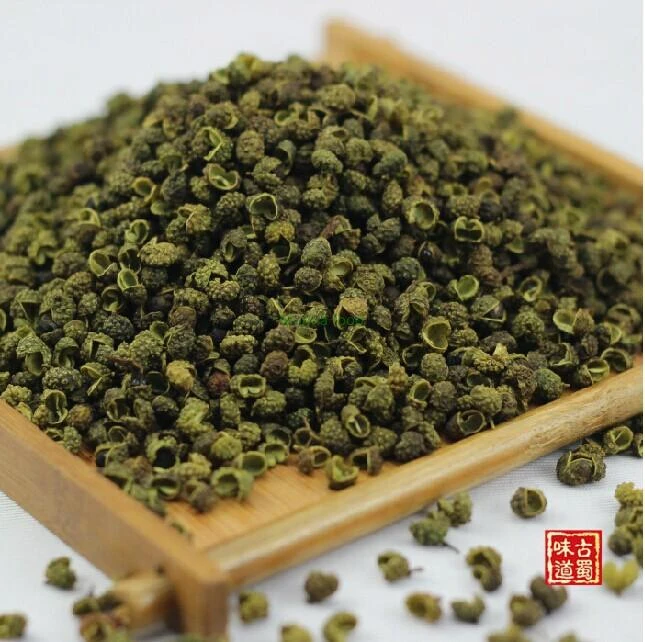
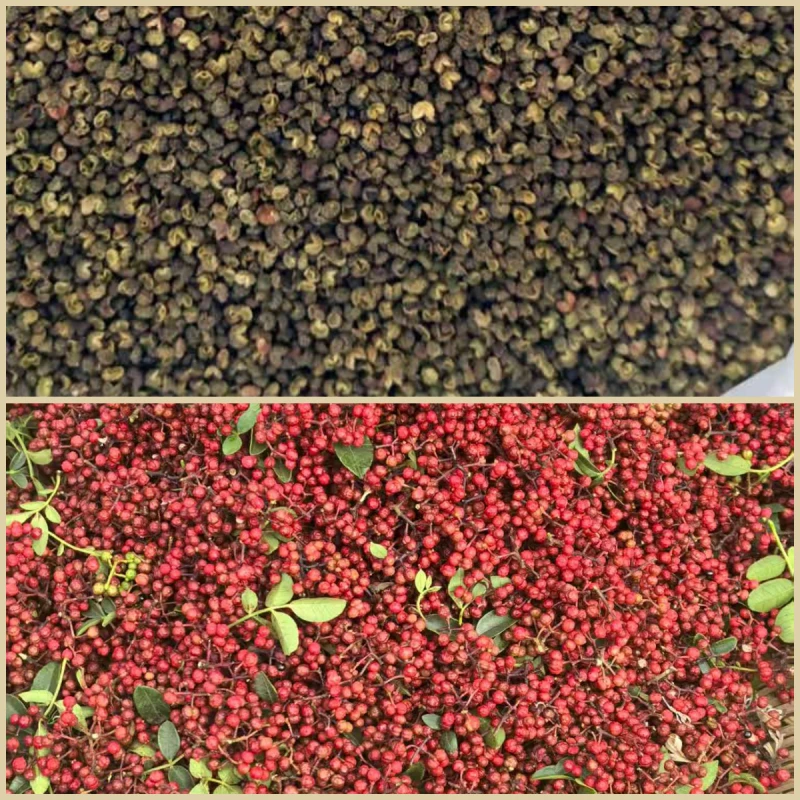

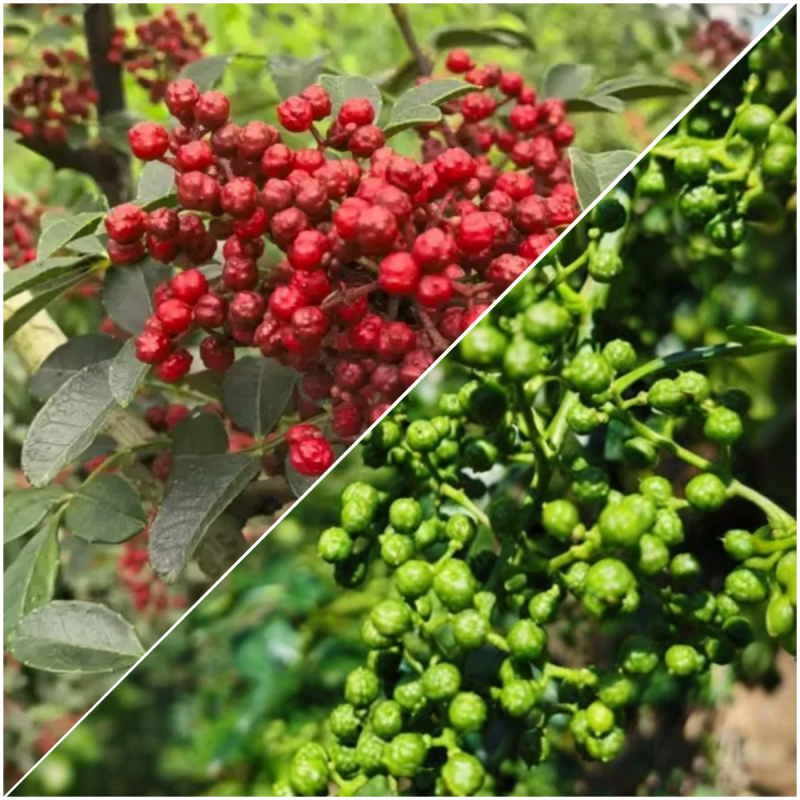
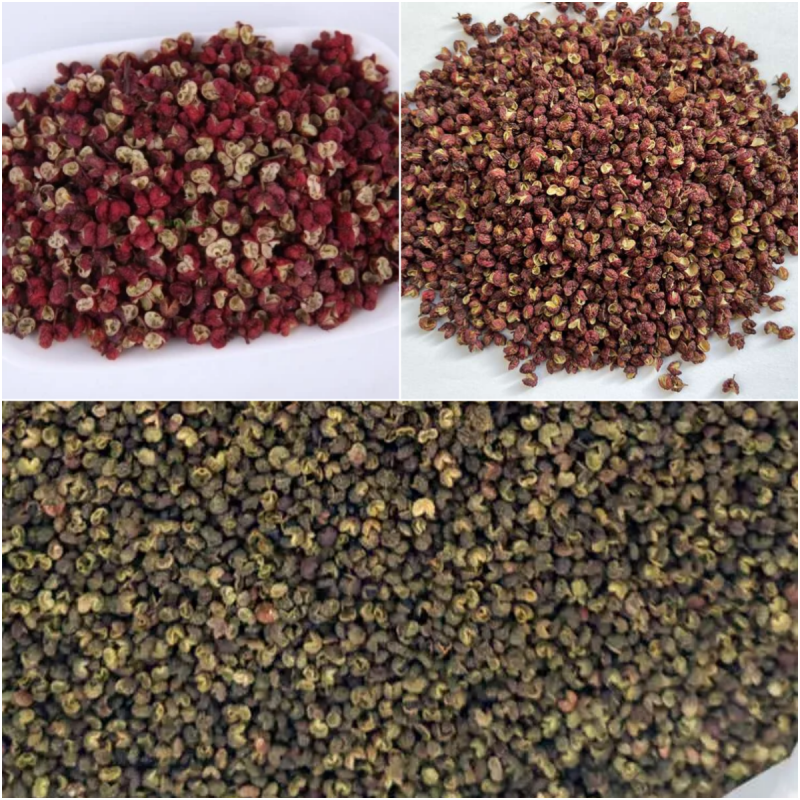
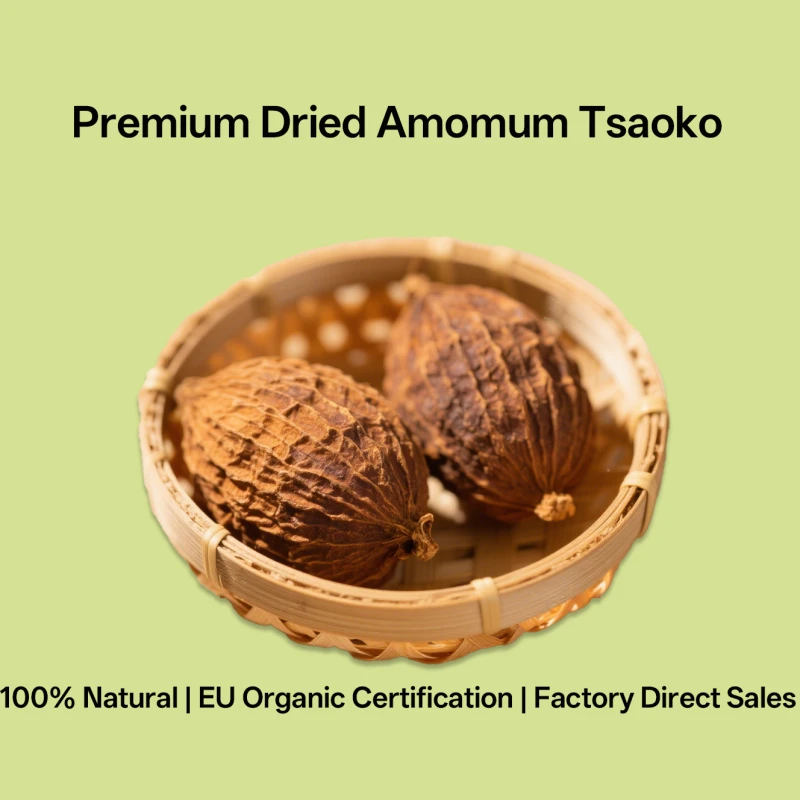
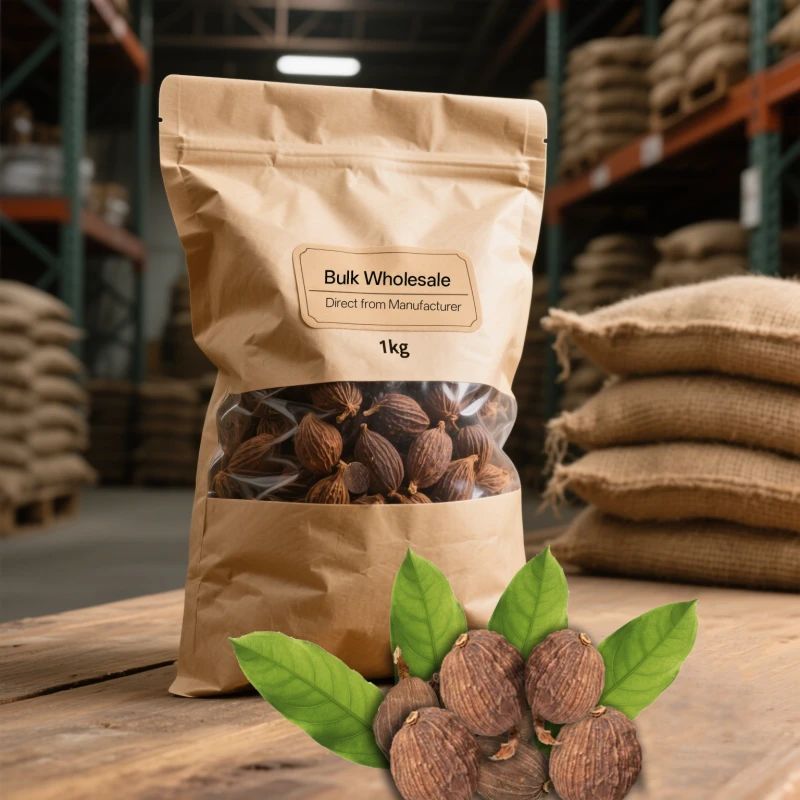
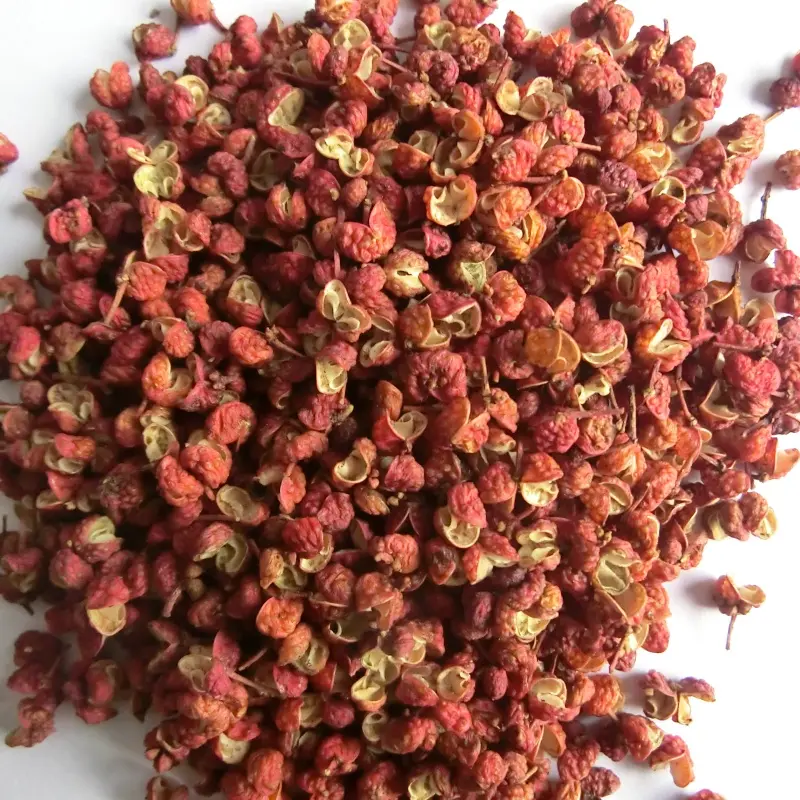
811.webp)
